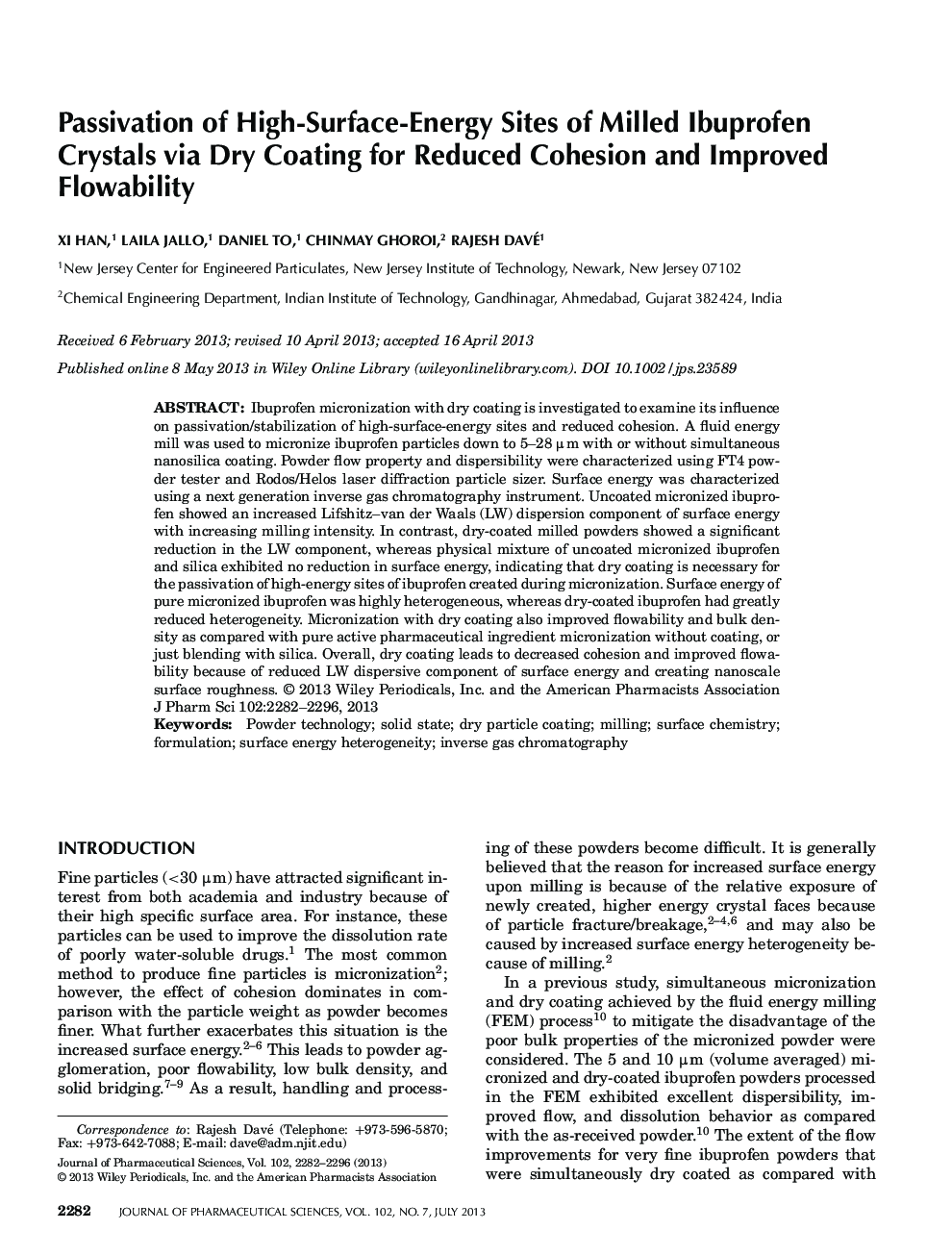| Article ID | Journal | Published Year | Pages | File Type |
|---|---|---|---|---|
| 2484755 | Journal of Pharmaceutical Sciences | 2013 | 15 Pages |
Abstract
Ibuprofen micronization with dry coating is investigated to examine its influence on passivation/stabilization of high-surface-energy sites and reduced cohesion. A fluid energy mill was used to micronize ibuprofen particles down to 5-28 μm with or without simultaneous nanosilica coating. Powder flow property and dispersibility were characterized using FT4 powder tester and Rodos/Helos laser diffraction particle sizer. Surface energy was characterized using a next generation inverse gas chromatography instrument. Uncoated micronized ibuprofen showed an increased Lifshitz-van der Waals (LW) dispersion component of surface energy with increasing milling intensity. In contrast, dry-coated milled powders showed a significant reduction in the LW component, whereas physical mixture of uncoated micronized ibuprofen and silica exhibited no reduction in surface energy, indicating that dry coating is necessary for the passivation of high-energy sites of ibuprofen created during micronization. Surface energy of pure micronized ibuprofen was highly heterogeneous, whereas dry-coated ibuprofen had greatly reduced heterogeneity. Micronization with dry coating also improved flowability and bulk density as compared with pure active pharmaceutical ingredient micronization without coating, or just blending with silica. Overall, dry coating leads to decreased cohesion and improved flowability because of reduced LW dispersive component of surface energy and creating nanoscale surface roughness. © 2013 Wiley Periodicals, Inc. and the American Pharmacists Association J Pharm Sci 102:2282-2296, 2013
Keywords
Related Topics
Health Sciences
Pharmacology, Toxicology and Pharmaceutical Science
Drug Discovery
Authors
Xi Han, Laila Jallo, Daniel To, Chinmay Ghoroi, Rajesh Davé,
